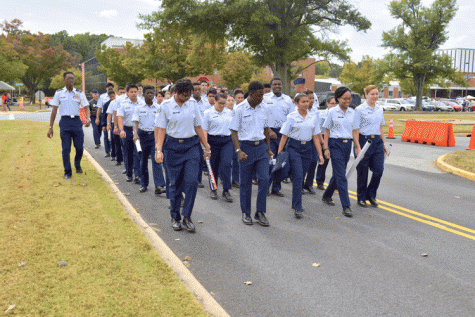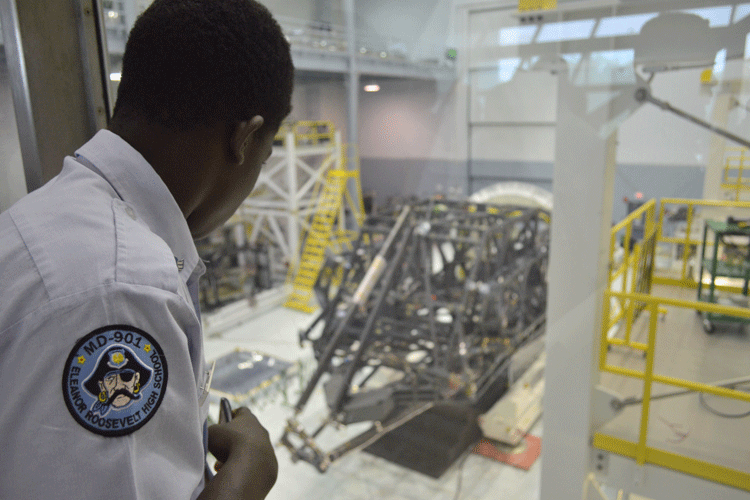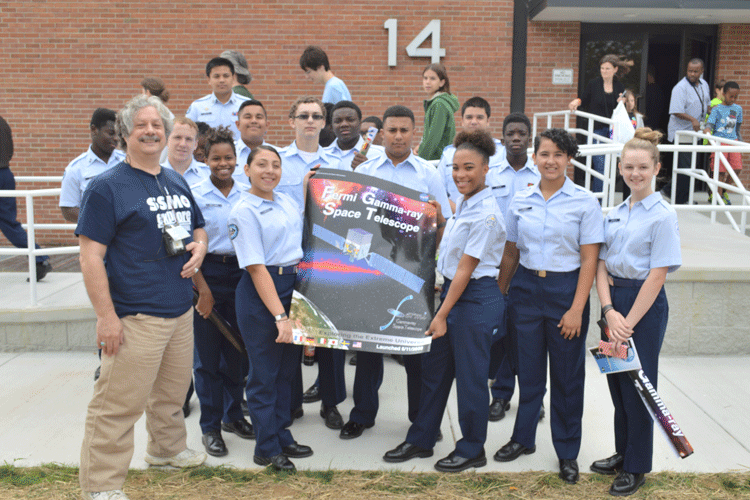MD-901 Visits NASA
October 14, 2015
On Saturday Sept. 26, cadets of the Eleanor Roosevelt HS AFJROTC program, unit MD-901, visited the NASA Goddard Space Flight Center in Greenbelt, MD in order to get a closer look at the complex.
NASA, the National Aeronautics and Space Administration, was created in 1958 with the purpose of researching aeronautics and aerospace. Out of the 20,000 people that attended the event, a total of 37 AFJROTC cadets came out to experience the tours and participate in the many activities offered.
 A lot of cadets had great things to say about the NASA trip.
A lot of cadets had great things to say about the NASA trip.
Cadet senior Airman Anthony Salazar said he “really enjoyed his time there,” and that as a student who loves physics he was highly interested in knowing how it was applied to NASA’s everyday routine.
Shortly after checking in, the cadets went on their first tour. The tour involved different satellites and Mission Control Centers such as the Fermi Gamma-Ray Space Telescope (FGST) and the Magnetospheric Multiscale (MMS). The FGST is a satellite to help astronomers investigate gamma-ray bursts, the most powerful explosions in the known universe. The MMS was designed to study an event known as magnetic reconnection, which occurs when magnetic-field lines break and reconnect with other field lines nearby. These events release great bursts of energy, sometimes referred to as “explosions in space,” according to MMS scientists, and if any particles ever get close to Earth, it can create things such as auroras in the sky.
Cadets learned that knowledge like this allows scientists to get a heads up on the magnitude of one of these explosions, and whether or not people have to take drastic measures. This process is done by using four identical spacecraft flying in a tetrahedral formation around Earth.
The tours gave the cadets a chance to hear what it is like to work at NASA, and the things NASA members do. On one occasion, a NASA engineer recalled how he “spent one month ‘living’ in the command center of a satellite” shortly after its launch, to ensure that it was functioning properly and efficiently.
Furthermore, as cadets walked through a NASA building, they saw the command center of a NASA satellite and a live look at how NASA currently tracks such satellites in space. The command center was filled with many computers and whiteboards; a lot of physics went into knowing locations of the satellites, space debris, and other things dealing with space.
Cadets also had the opportunity to have a close look at the James Webb space telescope, a satellite that NASA is currently working on and planning to launch into space in 2018 as a replacement for the Hubble space telescope.
Cadet Second Lieutenant Nathan Donoghue was amazed at how “they can monitor all these different satellites and gather plenty of information from great distances.”
This article was written by AFJROTC students as a special to The Raider Review.




